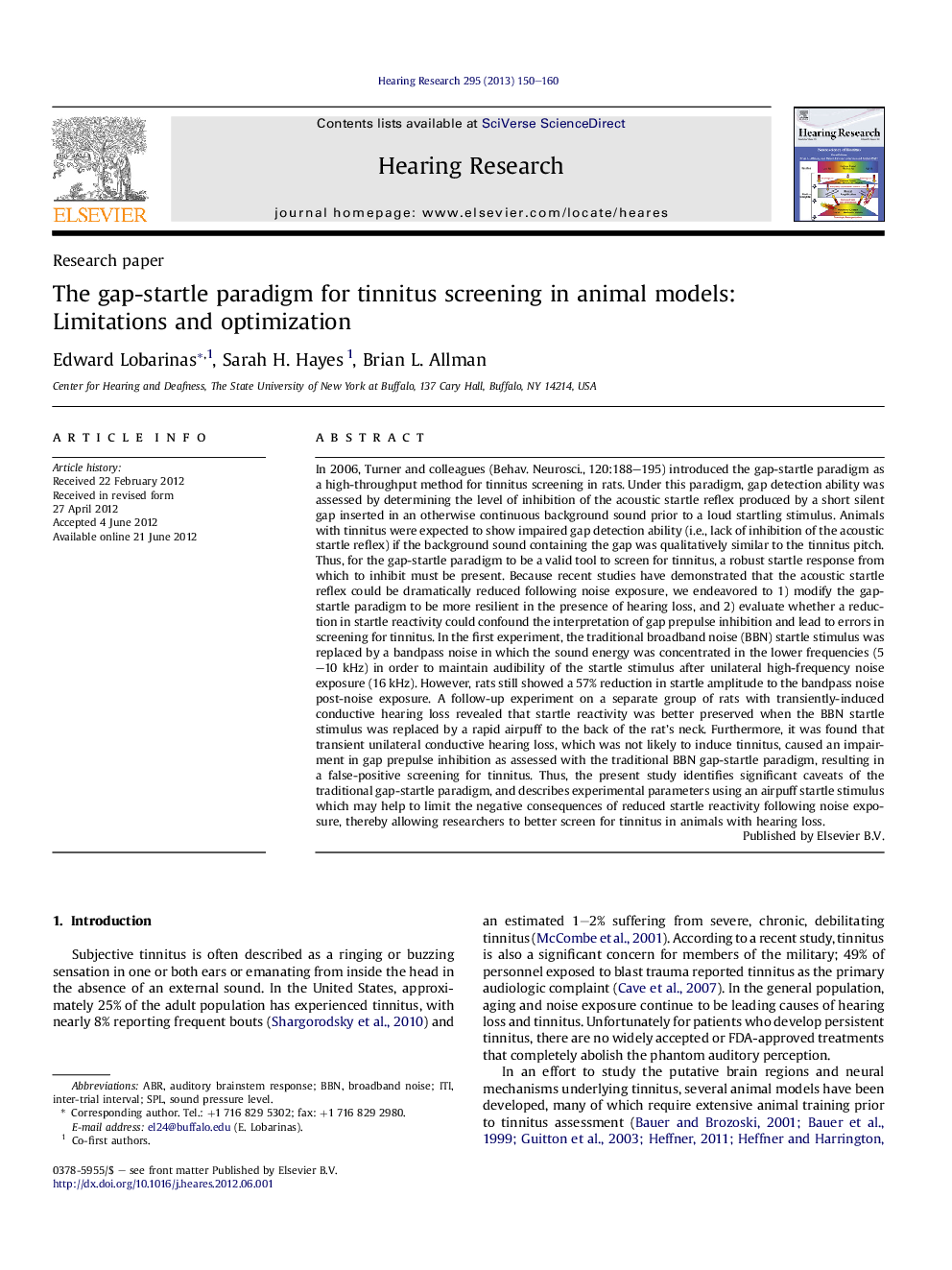| کد مقاله | کد نشریه | سال انتشار | مقاله انگلیسی | نسخه تمام متن |
|---|---|---|---|---|
| 4355308 | 1615605 | 2013 | 11 صفحه PDF | دانلود رایگان |

In 2006, Turner and colleagues (Behav. Neurosci., 120:188–195) introduced the gap-startle paradigm as a high-throughput method for tinnitus screening in rats. Under this paradigm, gap detection ability was assessed by determining the level of inhibition of the acoustic startle reflex produced by a short silent gap inserted in an otherwise continuous background sound prior to a loud startling stimulus. Animals with tinnitus were expected to show impaired gap detection ability (i.e., lack of inhibition of the acoustic startle reflex) if the background sound containing the gap was qualitatively similar to the tinnitus pitch. Thus, for the gap-startle paradigm to be a valid tool to screen for tinnitus, a robust startle response from which to inhibit must be present. Because recent studies have demonstrated that the acoustic startle reflex could be dramatically reduced following noise exposure, we endeavored to 1) modify the gap-startle paradigm to be more resilient in the presence of hearing loss, and 2) evaluate whether a reduction in startle reactivity could confound the interpretation of gap prepulse inhibition and lead to errors in screening for tinnitus. In the first experiment, the traditional broadband noise (BBN) startle stimulus was replaced by a bandpass noise in which the sound energy was concentrated in the lower frequencies (5–10 kHz) in order to maintain audibility of the startle stimulus after unilateral high-frequency noise exposure (16 kHz). However, rats still showed a 57% reduction in startle amplitude to the bandpass noise post-noise exposure. A follow-up experiment on a separate group of rats with transiently-induced conductive hearing loss revealed that startle reactivity was better preserved when the BBN startle stimulus was replaced by a rapid airpuff to the back of the rat’s neck. Furthermore, it was found that transient unilateral conductive hearing loss, which was not likely to induce tinnitus, caused an impairment in gap prepulse inhibition as assessed with the traditional BBN gap-startle paradigm, resulting in a false-positive screening for tinnitus. Thus, the present study identifies significant caveats of the traditional gap-startle paradigm, and describes experimental parameters using an airpuff startle stimulus which may help to limit the negative consequences of reduced startle reactivity following noise exposure, thereby allowing researchers to better screen for tinnitus in animals with hearing loss.
► Gap-startle paradigm uses acoustic startle response (ASR) to screen rats for tinnitus.
► Noise exposure reduced ASR, which could confound tinnitus screening.
► Conductive hearing loss reduced ASR, leading to false-positive estimate of tinnitus.
► Airpuff startle response better preserved during conductive hearing loss than ASR.
► This study shows caveats and optimized parameters for the gap-startle paradigm.
Journal: Hearing Research - Volume 295, January 2013, Pages 150–160